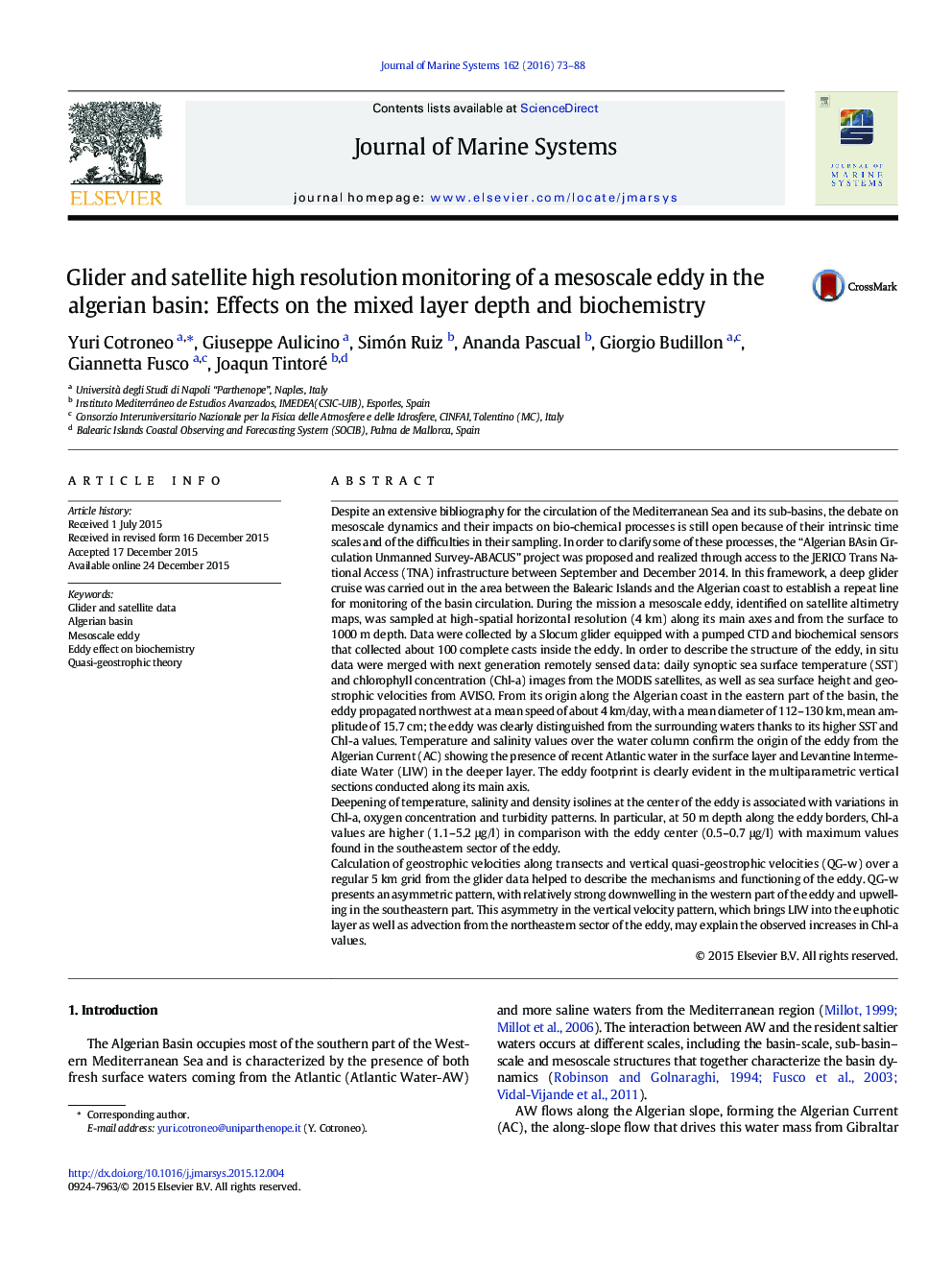| کد مقاله | کد نشریه | سال انتشار | مقاله انگلیسی | نسخه تمام متن |
|---|---|---|---|---|
| 4547871 | 1627268 | 2016 | 16 صفحه PDF | دانلود رایگان |
ABSTRACTDespite an extensive bibliography for the circulation of the Mediterranean Sea and its sub-basins, the debate on mesoscale dynamics and their impacts on bio-chemical processes is still open because of their intrinsic time scales and of the difficulties in their sampling. In order to clarify some of these processes, the “Algerian BAsin Circulation Unmanned Survey-ABACUS” project was proposed and realized through access to the JERICO Trans National Access (TNA) infrastructure between September and December 2014. In this framework, a deep glider cruise was carried out in the area between the Balearic Islands and the Algerian coast to establish a repeat line for monitoring of the basin circulation. During the mission a mesoscale eddy, identified on satellite altimetry maps, was sampled at high-spatial horizontal resolution (4 km) along its main axes and from the surface to 1000 m depth. Data were collected by a Slocum glider equipped with a pumped CTD and biochemical sensors that collected about 100 complete casts inside the eddy. In order to describe the structure of the eddy, in situ data were merged with next generation remotely sensed data: daily synoptic sea surface temperature (SST) and chlorophyll concentration (Chl-a) images from the MODIS satellites, as well as sea surface height and geostrophic velocities from AVISO. From its origin along the Algerian coast in the eastern part of the basin, the eddy propagated northwest at a mean speed of about 4 km/day, with a mean diameter of 112–130 km, mean amplitude of 15.7 cm; the eddy was clearly distinguished from the surrounding waters thanks to its higher SST and Chl-a values. Temperature and salinity values over the water column confirm the origin of the eddy from the Algerian Current (AC) showing the presence of recent Atlantic water in the surface layer and Levantine Intermediate Water (LIW) in the deeper layer. The eddy footprint is clearly evident in the multiparametric vertical sections conducted along its main axis.Deepening of temperature, salinity and density isolines at the center of the eddy is associated with variations in Chl-a, oxygen concentration and turbidity patterns. In particular, at 50 m depth along the eddy borders, Chl-a values are higher (1.1–5.2 μg/l) in comparison with the eddy center (0.5–0.7 μg/l) with maximum values found in the southeastern sector of the eddy.Calculation of geostrophic velocities along transects and vertical quasi-geostrophic velocities (QG-w) over a regular 5 km grid from the glider data helped to describe the mechanisms and functioning of the eddy. QG-w presents an asymmetric pattern, with relatively strong downwelling in the western part of the eddy and upwelling in the southeastern part. This asymmetry in the vertical velocity pattern, which brings LIW into the euphotic layer as well as advection from the northeastern sector of the eddy, may explain the observed increases in Chl-a values.
Journal: Journal of Marine Systems - Volume 162, October 2016, Pages 73–88
